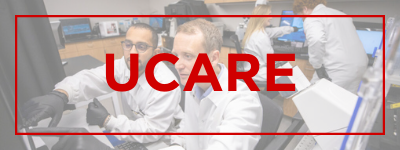UCARE: Undergraduate Creative Activities and Research Experiences

UCARE: Research Products
Date of this Version
Spring 4-13-2020
Document Type
Poster
Citation
Rodriguez, A., Harms, M., Goodrich, M. J., Fitton, L. (2020). Early Language and Literacy Skills of Spanish-Speaking Dual Language Learners. University of Nebraska-Lincoln; University of South Carolina.
Abstract
The purpose of this study is to examine the early language measures that are the best predictors of English reading achievement and to determine whether assessing DLLs’ Spanish language skills contributes to the prediction of English reading achievement. Preschool and kindergarten often represent DLLs’ first significant exposure to English, and development of English language proficiency is strongly linked to English reading achievement (Storch & Whitehurst, 2002). Because DLLs may not be exposed to English consistently prior to preschool or kindergarten, they often enter kindergarten with lower levels of English proficiency than their monolingual peers. This makes it difficult to identify DLLs who may be at risk for reading difficulties based on their language proficiency. Currently, many measures exist to assess the early language skills of dual language learners early in school, but little research has been conducted to compare which assessments are the best predictors of students’ future English reading achievement. The fact that many DLLs enter elementary school with low English proficiency complicates identification of students at risk for later difficulties. For example, is the limited English proficiency of DLLs simply a result of lack of exposure? Or do DLLs also have low proficiency in their first language (Spanish)? Therefore, an additional purpose to this study is to examine whether assessing children’s language skills in Spanish further contributes to prediction of English reading achievement.
Included in
Bilingual, Multilingual, and Multicultural Education Commons, Early Childhood Education Commons, Language and Literacy Education Commons


Comments
Copyright 2020 by the authors.